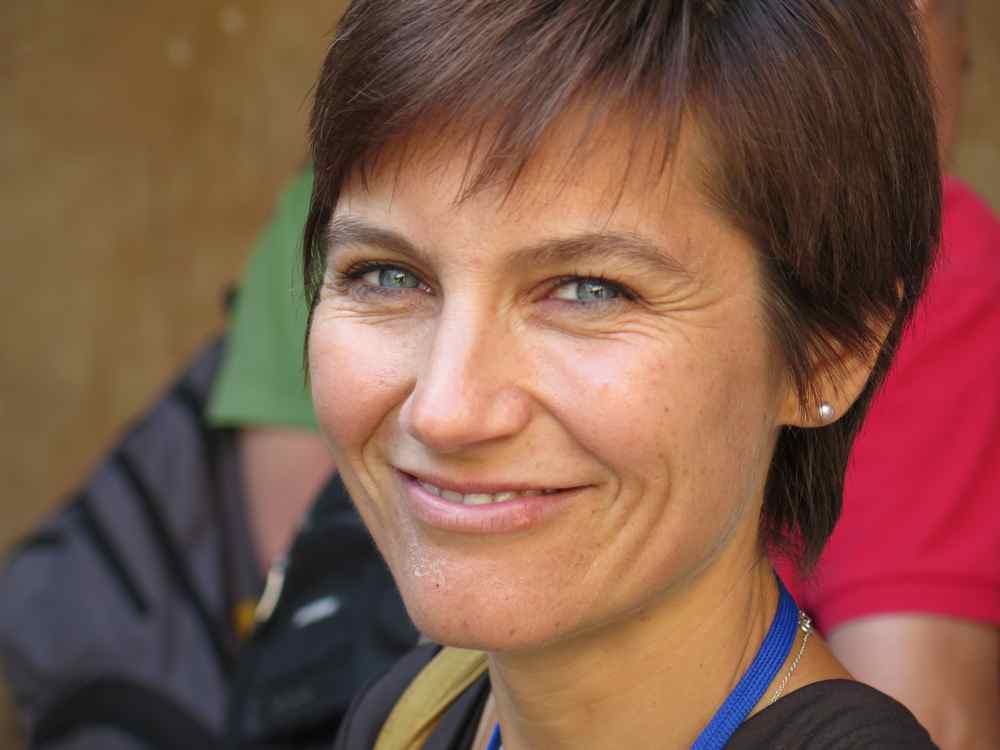Studying at the University of Verona
Here you can find information on the organisational aspects of the Programme, lecture timetables, learning activities and useful contact details for your time at the University, from enrolment to graduation.
Academic calendar
The academic calendar shows the deadlines and scheduled events that are relevant to students, teaching and technical-administrative staff of the University. Public holidays and University closures are also indicated. The academic year normally begins on 1 October each year and ends on 30 September of the following year.
Course calendar
The Academic Calendar sets out the degree programme lecture and exam timetables, as well as the relevant university closure dates..
| Period | From | To |
|---|---|---|
| I semestre | Oct 1, 2019 | Jan 31, 2020 |
| II semestre | Mar 2, 2020 | Jun 12, 2020 |
| Session | From | To |
|---|---|---|
| Sessione invernale d'esame | Feb 3, 2020 | Feb 28, 2020 |
| Sessione estiva d'esame | Jun 15, 2020 | Jul 31, 2020 |
| Sessione autunnale d'esame | Sep 1, 2020 | Sep 30, 2020 |
| Session | From | To |
|---|---|---|
| Sessione estiva di laurea | Jul 22, 2020 | Jul 22, 2020 |
| Sessione autunnale di laurea | Oct 14, 2020 | Oct 14, 2020 |
| Sessione autunnale di laurea solo triennale | Dec 10, 2020 | Dec 10, 2020 |
| Sessione invernale di laurea | Mar 16, 2021 | Mar 16, 2021 |
| Period | From | To |
|---|---|---|
| Festa di Ognissanti | Nov 1, 2019 | Nov 1, 2019 |
| Festa dell'Immacolata | Dec 8, 2019 | Dec 8, 2019 |
| Vacanze di Natale | Dec 23, 2019 | Jan 6, 2020 |
| Vacanze di Pasqua | Apr 10, 2020 | Apr 14, 2020 |
| Festa della Liberazione | Apr 25, 2020 | Apr 25, 2020 |
| Festa del lavoro | May 1, 2020 | May 1, 2020 |
| Festa del Santo Patrono | May 21, 2020 | May 21, 2020 |
| Festa della Repubblica | Jun 2, 2020 | Jun 2, 2020 |
| Vacanze estive | Aug 10, 2020 | Aug 23, 2020 |
Exam calendar
Exam dates and rounds are managed by the relevant Science and Engineering Teaching and Student Services Unit.
To view all the exam sessions available, please use the Exam dashboard on ESSE3.
If you forgot your login details or have problems logging in, please contact the relevant IT HelpDesk, or check the login details recovery web page.
Should you have any doubts or questions, please check the Enrollment FAQs
Academic staff
 federicoluigi.dipasquale@univr.it
federicoluigi.dipasquale@univr.it
 tamara.fioroni@univr.it
tamara.fioroni@univr.it
 rosanna.laking@univr.it
rosanna.laking@univr.it
 davide.mattiolo@univr.it
davide.mattiolo@univr.it
 giulio.mazzi@univr.it
giulio.mazzi@univr.it
 chiara.nardon@univr.it
chiara.nardon@univr.it
 daniela.pianezzi@univr.it
daniela.pianezzi@univr.it

Raffaele Alice
 alice.raffaele@univr.it
alice.raffaele@univr.it
 elia.vincenzi@univr.it
elia.vincenzi@univr.it
 franco.zivcovich@univr.it
franco.zivcovich@univr.it
 simone.zuccher@univr.it
simone.zuccher@univr.it
Study Plan
The Study Plan includes all modules, teaching and learning activities that each student will need to undertake during their time at the University.
Please select your Study Plan based on your enrollment year.
1° Year
| Modules | Credits | TAF | SSD |
|---|
2° Year activated in the A.Y. 2020/2021
| Modules | Credits | TAF | SSD |
|---|
3° Year activated in the A.Y. 2021/2022
| Modules | Credits | TAF | SSD |
|---|
| Modules | Credits | TAF | SSD |
|---|
| Modules | Credits | TAF | SSD |
|---|
| Modules | Credits | TAF | SSD |
|---|
| Modules | Credits | TAF | SSD |
|---|
Legend | Type of training activity (TTA)
TAF (Type of Educational Activity) All courses and activities are classified into different types of educational activities, indicated by a letter.
Financial mathematics (2021/2022)
Teaching code
4S008402
Teacher
Coordinator
Credits
9
Language
Italian
Scientific Disciplinary Sector (SSD)
SECS-S/06 - MATHEMATICAL METHODS OF ECONOMICS, FINANCE AND ACTUARIAL SCIENCES
Period
Primo semestre dal Oct 4, 2021 al Jan 28, 2022.
Learning outcomes
The course aims to introduce the main quantitative models for the analysis, evaluation and management of financial assets, and provides the fundamental elements for the quantitative study of the finance of bonds and stoke. The student will have the opportunity to learn the terminology and the appropriate concepts for understanding and using the tools of financial mathematics. The critical capacity of describing and developing the basic models of finance will be stimulated with particular attention to the management of the risk-return profile of a financial asset.At the same time the course develops the main quantitative methodologies useful as a basis to attend advanced finance courses.
Program
Part 1: classical financial mathematics - Main Reference: Scandolo
1) Basic financial operations, simple interest, interest in advance, compounding of interest, exponential regime.
2) Annuities and amortization: non-elementary investment and financing, annuities with constant rates, annuities with installments following a geometric progression, amortization, common amortization clauses, amortization with viariable interest rate.
3) Choice without uncertainty: return for elementary and generic investment, choice criteria for investment and financing operations.
4) Bonds: classification, zero coupon bonds, fixed coupon bonds. Term structure: yield curve, complete and incomplete markets.
5) Immunization: Maculay’s duration and convexity, immunized portfolios.
Part 2: mathematical finance in the presence of uncertainty - Main references: Föllmer Schied and Pascucci Runggaldier.
6) Probability theory refresher: probability spaces, independence, Radon-Nikodym theorem, expectation, conditional expectation, martingales, convergence of random variables.
7) Arbitrage theory in one period: foundations and fundamental theorem of asset pricing, contingnt claimds, market completeness.
8) Arbitrage theory in multiperiod models: fundamental on multiperiod models, absence of arbitrage, European contingent claims, binomial model (Cox-Ross Rubinstein).
9) American contingent claims: foundataions, valuation and hedging, arbitrage free prices and replicability in general markets.
Time permitting: Preferences and risk aversion: expected utility criterion (St. Petersburgh paradox), von Neumann Morgenstern axioms, stochastic dominance, mean variance criterion and static portfolio optimization, CAPM.
Bibliography
Examination Methods
2 Hour written exam: the exam will contain both exercises and theoretical questions (statements to be proved)
Course Objectives
- Knowing and understanding the fundamental concepts of basic financial mathematics in a deterministic setting
- Knowing and understanding the fundamental concepts of modern financial mathematics in a stochastic setting
- Obtaining adequate analytical and abstraction skills.
- Knowing how to apply the above knowledge to solve problems and exercise, demonstrating a good level of mathematical rigour.
Type D and Type F activities
| years | Modules | TAF | Teacher |
|---|---|---|---|
| 1° 2° 3° | Python programming language | D |
Maurizio Boscaini
(Coordinator)
|
| 1° 2° 3° | SageMath | F |
Zsuzsanna Liptak
(Coordinator)
|
| 1° 2° 3° | History of Modern Physics 2 | D |
Francesca Monti
(Coordinator)
|
| 1° 2° 3° | History and Didactics of Geology | D |
Guido Gonzato
(Coordinator)
|
| years | Modules | TAF | Teacher |
|---|---|---|---|
| 1° 2° 3° | C Programming Language | D |
Sara Migliorini
(Coordinator)
|
| 1° 2° 3° | C++ Programming Language | D |
Federico Busato
(Coordinator)
|
| 1° 2° 3° | LaTeX Language | D |
Enrico Gregorio
(Coordinator)
|
| years | Modules | TAF | Teacher |
|---|---|---|---|
| 1° 2° 3° | Corso Europrogettazione | D | Not yet assigned |
| 1° 2° 3° | Corso online ARPM bootcamp | F | Not yet assigned |
| 1° 2° 3° | ECMI modelling week | F | Not yet assigned |
| 1° 2° 3° | ESA Summer of code in space (SOCIS) | F | Not yet assigned |
| 1° 2° 3° | Google summer of code (GSOC) | F | Not yet assigned |
Career prospects
Module/Programme news
News for students
There you will find information, resources and services useful during your time at the University (Student’s exam record, your study plan on ESSE3, Distance Learning courses, university email account, office forms, administrative procedures, etc.). You can log into MyUnivr with your GIA login details: only in this way will you be able to receive notification of all the notices from your teachers and your secretariat via email and also via the Univr app.
Graduation
Documents
| Title | Info File |
|---|---|
|
|
pdf, it, 31 KB, 29/07/21 |
|
|
pdf, it, 31 KB, 29/07/21 |
|
|
pdf, it, 171 KB, 20/03/24 |
List of thesis proposals
| theses proposals | Research area |
|---|---|
| Formule di rappresentazione per gradienti generalizzati | Mathematics - Analysis |
| Formule di rappresentazione per gradienti generalizzati | Mathematics - Mathematics |
| Proposte Tesi A. Gnoatto | Various topics |
| Mathematics Bachelor and Master thesis titles | Various topics |
| THESIS_1: Sensors and Actuators for Applications in Micro-Robotics and Robotic Surgery | Various topics |
| THESIS_2: Force Feedback and Haptics in the Da Vinci Robot: study, analysis, and future perspectives | Various topics |
| THESIS_3: Cable-Driven Systems in the Da Vinci Robotic Tools: study, analysis and optimization | Various topics |
Attendance
As stated in the Teaching Regulations for the A.Y. 2022/2023, except for specific practical or lab activities, attendance is not mandatory. Regarding these activities, please see the web page of each module for information on the number of hours that must be attended on-site.
Career management
Student login and resources
Erasmus+ and other experiences abroad
Orientamento in itinere per studenti e studentesse
La commissione ha il compito di guidare le studentesse e gli studenti durante l'intero percorso di studi, di orientarli nella scelta dei percorsi formativi, di renderli attivamente partecipi del processo formativo e di contribuire al superamento di eventuali difficoltà individuali.
E' composta dai proff. Sisto Baldo, Marco Caliari, Francesca Mantese, Giandomenico Orlandi e Nicola Sansonetto

 +39 045 802 7913
+39 045 802 7913


































